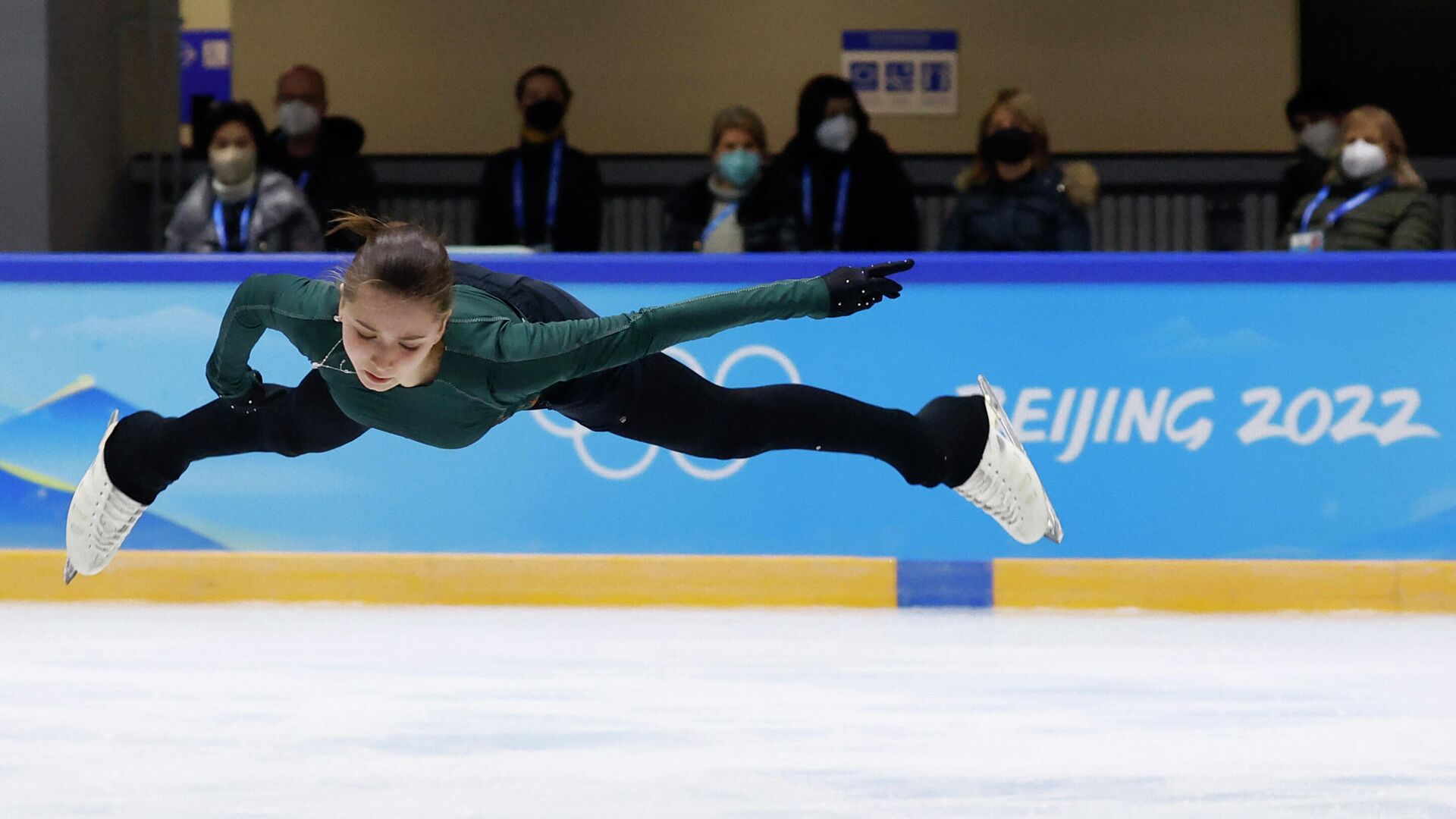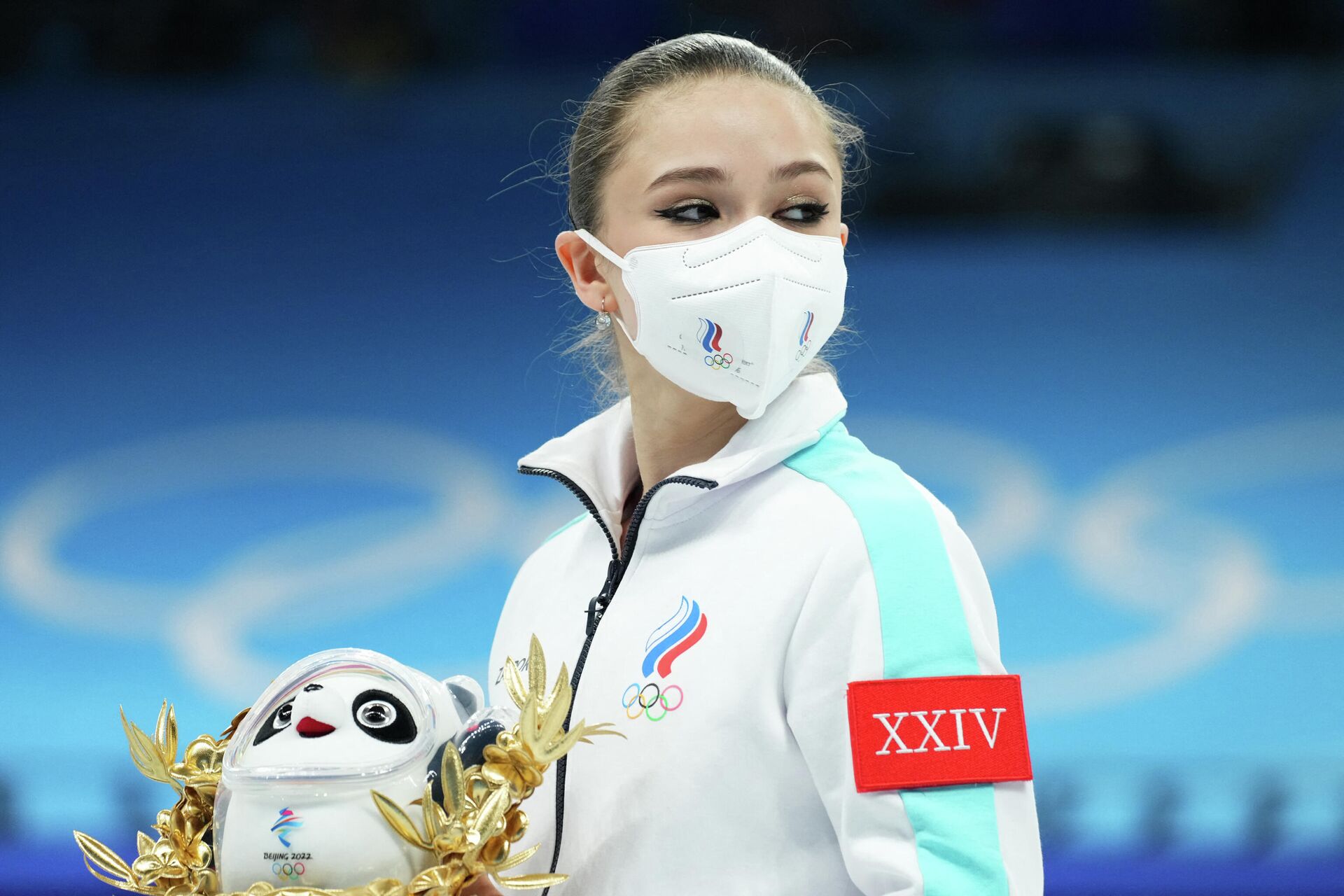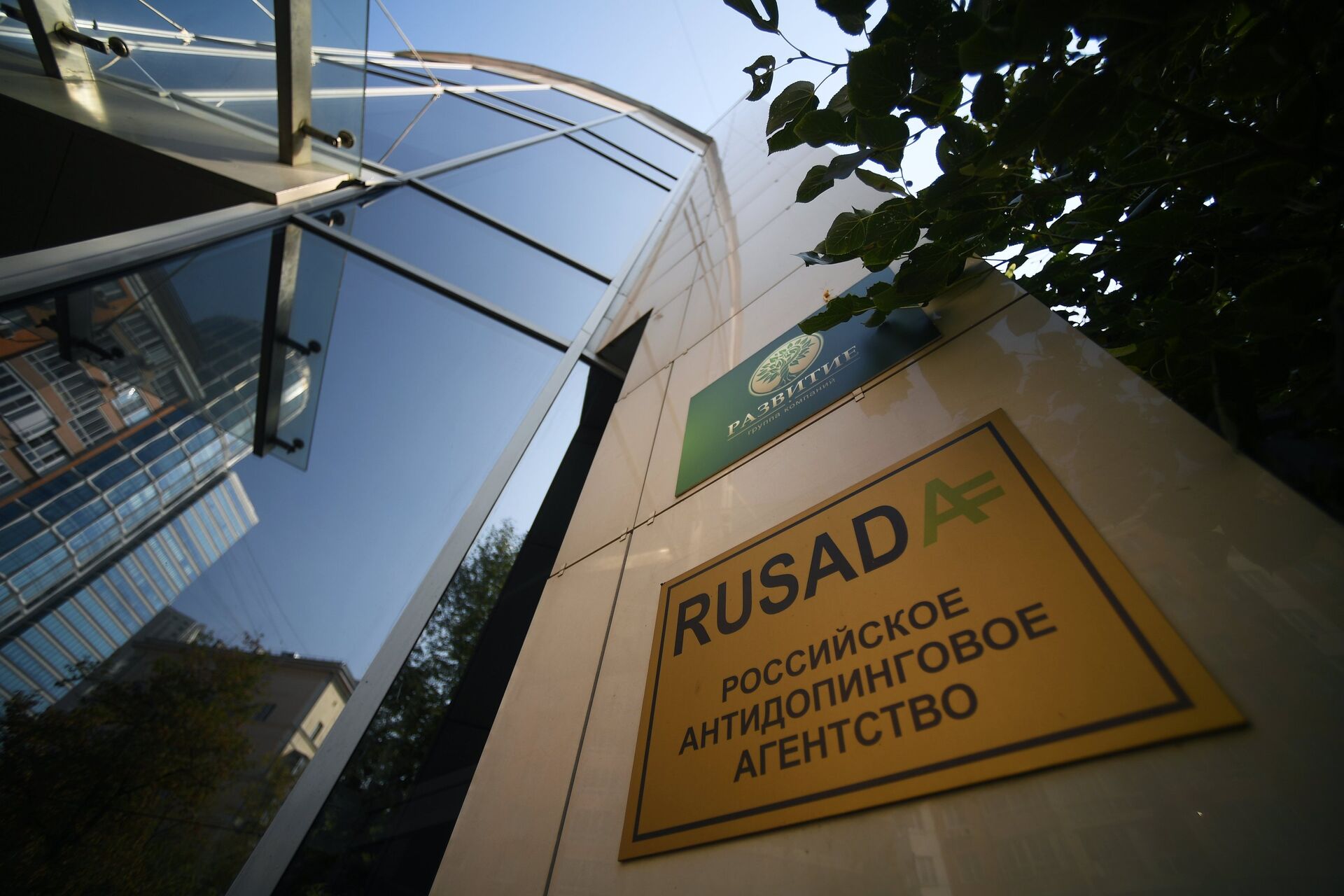https://sputnikglobe.com/20220216/physicist-claims-against-valieva--russia-null-until-b-sample-test-conducted-in-skaters-presence-1093082967.html
Physicist: Claims Against Valieva & Russia Null Until B-Sample Test Conducted in Skater's Presence
Physicist: Claims Against Valieva & Russia Null Until B-Sample Test Conducted in Skater's Presence
Sputnik International
While CAS allowed Russian figure skater Kamila Valieva to compete, the Western media continues to spin speculations. The New York Times on Tuesday claimed... 16.02.2022, Sputnik International
2022-02-16T12:56+0000
2022-02-16T12:56+0000
2022-02-16T12:56+0000
2022 winter olympic games in beijing
russia
world
opinion
doping
doping tests
world anti-doping agency's (wada)
russian anti-doping agency rusada
usada
olympic games
https://cdn1.img.sputnikglobe.com/img/07e6/02/0e/1093017184_0:0:2896:1629_1920x0_80_0_0_a6d1ff90df85d695d596e4cf76dc9a7a.jpg
"The doping case of Kamila Valieva is very suspicious [and] has been extremely badly handled, both by the World Anti-Doping Agency (WADA) and the International Olympic Committee (IOC)", says Dr Stig Froberg, a physicist from Finland, who has over 40 years of experience in analytical chemistry, organic chemistry, and physical chemistry. "Both should be totally neutral, but clearly, when it is a question of a Russian athlete, they are strongly biased. There seems to be a lot of politics involved, all though it should not be. The Olympic Games are not a Ukraine crisis, which NATO and EU countries cry every single day".It is very important that the Russian Olympic Committee (ROC) does a detailed study on where the Valieva test samples were kept for several weeks and why, according to the physicist. WADA has not provided a convincing explanation for the huge 45-day time window between the dates the sample was taken and published, stresses Dr Froberg.The Russian anti-doping agency (RUSADA) earlier issued an official statement clarifying that Valieva's sample was "delivered to the laboratory in time sufficient to perform the analysis within the standard timeframe". The agency noted that the WADA-accredited Stockholm laboratory had informed it that the results of the test would be ready before the end of January and that the analysis of Valieva's sample would be performed "as a priority". Nevertheless, the lab only delivered the information of a "positive" doping test on 7 February, according to RUSADA.After Inside the Games unmasked the 15-year-old figure skater on 9 February the press and social media started circulating speculations concerning Valieva's positive doping test, with WADA and USADA chiefs subjecting Russia to harsh criticism.These speculations do not have any merit until a validation test and an inquiry have taken place, according to Dr Froberg. He does not rule out that the Valieva test result is a "false positive". In 2008, the physicist helped clear Russian runner Olga Yegorova of false test results for erythropoietin (EPO), made by a French anti-doping laboratory. He worked closely with former head of the anti-doping inspection of the ROC Nikolay Durmanov at that time.Every analysis method contains different types of errors, Froberg explains. For example, if one runs the same sample several times, there could be a deviation between the results, which is called the "repeatability error R".Yet another kind of error is a "minimum detection limit": "Every detector has its own 'minimum detection limit', under which the detector 'cannot see anything reliably'", the physicist says. "Reproducibility error R" is the allowed deviation between two or more labs, when the same sample is tested in different laboratories, according to him.Why A Sample and B Sample are NeededThere is a strictly regulated procedure for conducting anti-doping tests, says Froberg. According to the physicist, when an athlete provides a urine sample to an anti-doping officer, he or she takes several steps.First, an athlete takes two sample bottles from the anti-doping officer's box and examines whether they are clean and not manipulated in any way. Second, the athlete urinates the minimum amount required by WADA and divides the urine by half into an "A bottle" and a "B bottle", which both have their own sample ID numbers. Then both sample bottles are sealed by the athlete. The procedure is conducted under the control of an anti-doping officer."When the samples arrive in a WADA-accredited laboratory, the A sample is analysed first", Froberg says. "It is a screening test for non-permitted compounds, and is normally conducted by an LC+MS analyser system (LC=Liquid Chromatograph, which separates the great many chemical compounds in urine; MS=Mass Spectrometer, which is the detector that identifies each separated compound by mass spectra, and which is unique to each chemical compound). The system has of course a fast computer, and lots of memory, which contain the forbidden compounds mass spectrum".If the MS identifies a non-permitted compound, it's a match and the test sample is regarded as a positive test result, which means the athlete may have taken a banned substance listed in the WADA forbidden compound list, according to the expert.The B-sample analysis is the validation analysis. If it is also positive, the athlete is considered doped. If the B-sample analysis results are negative, the athlete is regarded as clean.Froberg stresses that in Valieva's case it is important that the WADA-accredited lab conducts the test in the presence of the athlete and her representative anti-doping expert. For instance, they should check whether the B-sample bottle's seal is not broken or that any needle marks are not noticed in the bottle. In general, the athlete and her expert should verify that every step of the validation analysis is performed according to the accepted method, which normally is an ISO-standardised written procedure, the physicist notes.Only after all the necessary procedures are conducted and the probe is wrapped up, would it be clear whether or not the athlete was doped, the physicist notes, adding that trimetazidine has never been shown to be a performance enhancing drug. However, if Valieva and her representative have not been invited to the Stockholm lab to observe the B-sample testing, this could amplify suspicions, according to Froberg.
Sputnik International
feedback@sputniknews.com
+74956456601
MIA „Rossiya Segodnya“
2022
News
en_EN
Sputnik International
feedback@sputniknews.com
+74956456601
MIA „Rossiya Segodnya“
Sputnik International
feedback@sputniknews.com
+74956456601
MIA „Rossiya Segodnya“
opinion, doping, doping tests, world anti-doping agency's (wada), russian anti-doping agency rusada, usada, olympic games, olympic winter games 2022
opinion, doping, doping tests, world anti-doping agency's (wada), russian anti-doping agency rusada, usada, olympic games, olympic winter games 2022
Physicist: Claims Against Valieva & Russia Null Until B-Sample Test Conducted in Skater's Presence
While CAS allowed Russian figure skater Kamila Valieva to compete, the Western media continues to spin speculations. The New York Times on Tuesday claimed, citing a USADA chief, that a trifecta of trimetazidine and two non-banned substances, allegedly found in the teenager's sample, "seem to be" increasing endurance and reducing fatigue.
"The doping case of Kamila Valieva is very suspicious [and] has been extremely badly handled, both by the World Anti-Doping Agency (WADA) and the International Olympic Committee (IOC)", says Dr Stig Froberg, a physicist from Finland, who has over 40 years of experience in analytical chemistry, organic chemistry, and physical chemistry. "Both should be totally neutral, but clearly, when it is a question of a Russian athlete,
they are strongly biased. There seems to be a lot of politics involved, all though it should not be. The Olympic Games are not a Ukraine crisis, which NATO and EU countries cry every single day".
It is very important that the Russian Olympic Committee (ROC) does a detailed study on where the Valieva test samples were kept for several weeks and why, according to the physicist. WADA has not provided a convincing explanation for the huge 45-day time window between the dates the sample was taken and published, stresses Dr Froberg.
"There are many WADA accredited laboratories in Europe, which could have analysed these Valieva samples in a 20-day time window", he says, adding that he does not buy into the version that the results from the Stockholm lab were delayed due to the COVID pandemic.
The Russian anti-doping agency (RUSADA) earlier issued an
official statement clarifying that Valieva's sample was "delivered to the laboratory in time sufficient to perform the analysis within the standard timeframe". The agency noted that the WADA-accredited Stockholm laboratory had informed it that the results of the test would be ready before the end of January and that the analysis of Valieva's sample would be performed "as a priority". Nevertheless, the lab only delivered the information of a "positive" doping test on 7 February, according to RUSADA.
After
Inside the Games unmasked the 15-year-old figure skater on 9 February the press and social media started circulating speculations concerning Valieva's positive doping test, with WADA and USADA chiefs
subjecting Russia to harsh criticism.
These speculations do not have any merit until a validation test and an inquiry have taken place, according to Dr Froberg. He does not rule out that the Valieva test result is a "false positive". In 2008, the physicist helped clear Russian runner Olga Yegorova of false test results for erythropoietin (EPO), made by a French anti-doping laboratory. He worked closely with former head of the anti-doping inspection of the ROC Nikolay Durmanov at that time.
"There does not exist a 100% accurate analysis in the whole world!", the physicist says.
Every analysis method contains different types of errors, Froberg explains. For example, if one runs the same sample several times, there could be a deviation between the results, which is called the "repeatability error R".
Yet another kind of error is a "minimum detection limit": "Every detector has its own 'minimum detection limit', under which the detector 'cannot see anything reliably'", the physicist says. "Reproducibility error R" is the allowed deviation between two or more labs, when the same sample is tested in different laboratories, according to him.
What's more, "manipulation or sabotage is always possible", Froberg highlights. For this reason, a B-sample test run in the presence of the athlete and his/her anti-doping expert is very important, according to the expert.
Why A Sample and B Sample are Needed
There is a strictly regulated procedure for conducting anti-doping tests, says Froberg. According to the physicist, when an athlete provides a urine sample to an anti-doping officer, he or she takes several steps.
First, an athlete takes two sample bottles from the anti-doping officer's box and examines whether they are clean and not manipulated in any way. Second, the athlete urinates the minimum amount required by WADA and divides the urine by half into an "A bottle" and a "B bottle", which both have their own sample ID numbers. Then both sample bottles are sealed by the athlete. The procedure is conducted under the control of an anti-doping officer.
"When the samples arrive in a WADA-accredited laboratory, the A sample is analysed first", Froberg says. "It is a screening test for non-permitted compounds, and is normally conducted by an LC+MS analyser system (LC=Liquid Chromatograph, which separates the great many chemical compounds in urine; MS=Mass Spectrometer, which is the detector that identifies each separated compound by mass spectra, and which is unique to each chemical compound). The system has of course a fast computer, and lots of memory, which contain the forbidden compounds mass spectrum".
If the MS identifies a non-permitted compound, it's a match and the test sample is regarded as a positive test result, which means the athlete may have taken a banned substance listed in the WADA forbidden compound list, according to the expert.
"If A-bottle tests show no traces of forbidden compounds, the test results are negative, and the B-sample bottle is not analysed anymore", the physicist says. "If the A-sample test is positive, the results are informed to both WADA and the athlete and his/her sports federation. Then, if the athlete and his/her [anti-doping] expert want to see the B-sample test made at the site, they must be invited by the WADA-accredited lab to see the B-sample bottle opening, sample conditioning, analysis and results. The results are fed to the Lab LIMS-system (Laboratory Information System), which is a large computer programme, which saves and holds the analysis results for future needs".
The B-sample analysis is the validation analysis. If it is also positive, the athlete is considered doped. If the B-sample analysis results are negative, the athlete is regarded as clean.
Froberg stresses that in Valieva's case it is important that the WADA-accredited lab conducts the test in the presence of the athlete and her representative anti-doping expert. For instance, they should check whether the B-sample bottle's seal is not broken or that any needle marks are not noticed in the bottle. In general, the athlete and her expert should verify that every step of the validation analysis is performed according to the accepted method, which normally is an ISO-standardised written procedure, the physicist notes.
"Before the analysis, a reference standard analysis is mandatory", Froberg remarks. "The reference standard must contain the forbidden chemical compound which was noticed in the earlier A-test run. With this standard run, we can see that the analyser's system is working correctly and according to the written test standard and the test results are valid".
Only after all the necessary procedures are conducted and the probe is wrapped up, would it be clear whether or not the athlete was doped, the physicist notes, adding that trimetazidine has never been shown to be a performance enhancing drug. However, if Valieva and her representative have not been invited to the Stockholm lab to observe the B-sample testing, this could amplify suspicions, according to Froberg.





